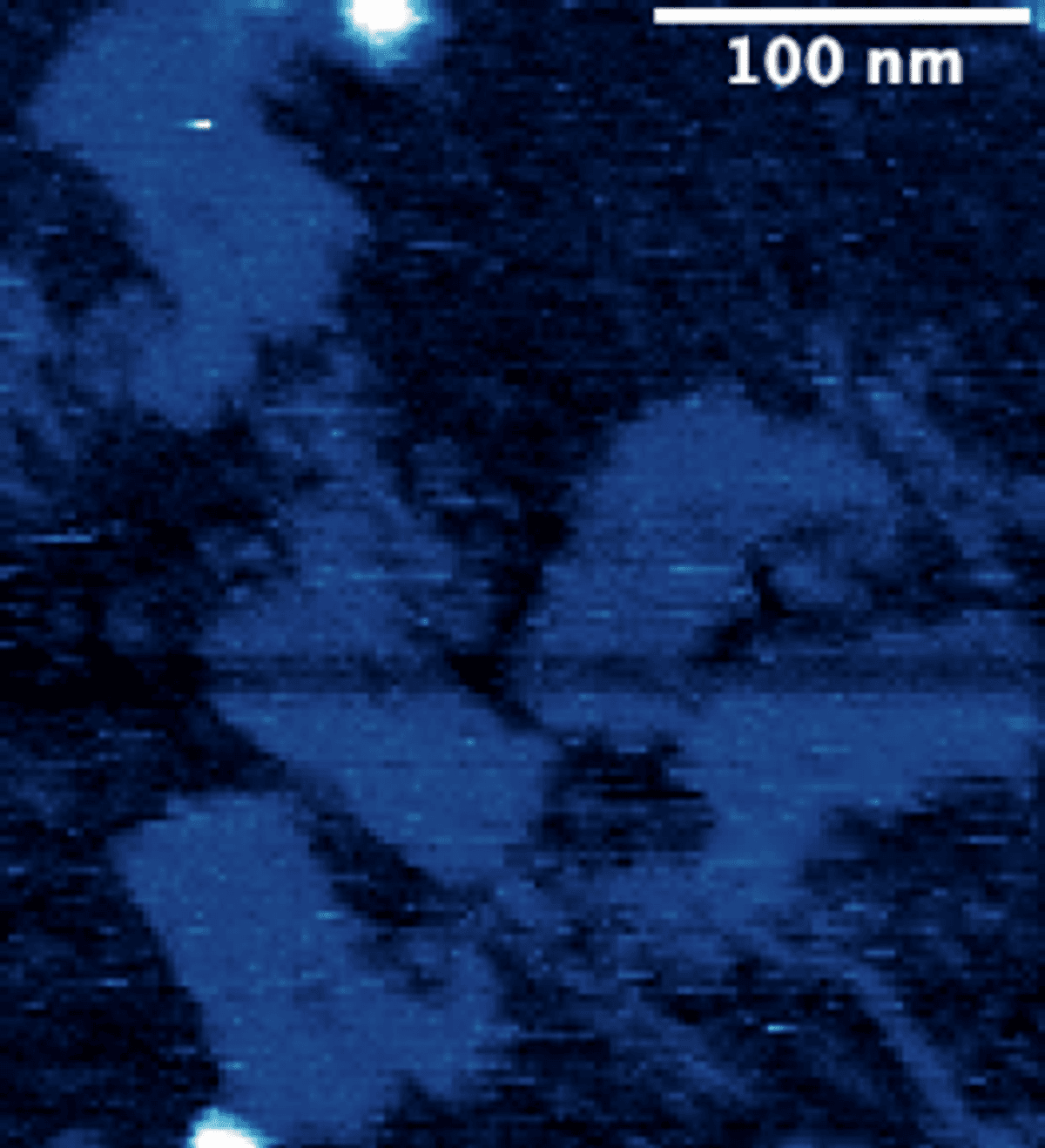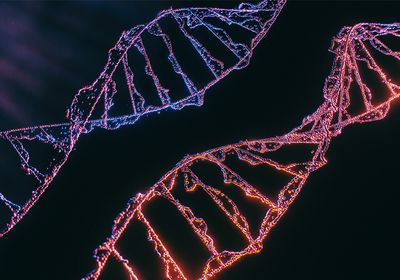ABOVE: Scientists get crafty with DNA to create intricate shapes, such as a Nerf gun, using DNA origami. © iStock, Evgenii Kovalev
For decades, scientists have tinkered with DNA to manipulate the genetic code as a biological blueprint. But beyond its conventional role, DNA is a unique material for nanoscale construction.1 This characteristic caught the attention of former NASA engineer turned YouTuber Mark Rober. Recently, he teamed up with Salk Institute biophysicist Pallav Kosuri to create a microscopic nerf gun made of DNA.

Rober began the project by building a Nerf gun that was 10,000 times smaller than the standard size using carbon nanotubes with researchers from Brigham Young University. But Rober wanted to scale down even further, so he reached out to Kosuri for help tackling his smallest project yet. Together, they manipulated DNA to craft a three million times smaller version of a Nerf gun blaster.2 Their bioRxiv preprint paves the way for intricate nanotechnology development.
“It was a deviation from what we normally do here,” said Kosuri, who makes microscopic tools using DNA origami to study single molecules in biological systems. “But it made quite a splash in getting people excited about the ability to build things out of DNA.”
DNA origami is a technique that takes advantage of DNA’s self-assembly.3 It involves a long single-stranded DNA scaffold with a known sequence mixed with hundreds of short, complementary staple strands that pair up at different places to form junctions and lattices in predetermined shapes.
“We use DNA the way a carpenter uses wood. Trees do not know anything about houses or tables,” said Paul Rothemund, a computational bioengineer at the California Institute of Technology who developed DNA origami and was not involved in the study. Now, scientists use DNA as a construction material for building tools for biological research.
See also “Origami” DNA Traps Could Keep Large Viruses From Infecting Cells"
For the Nerf gun, Kosuri and his team drafted a prototype using a commonly used DNA origami design software. They developed a couple of iterations to fine tune the proportions to accurately mimic the Maverick Rev-6 Nerf model. “Even if it’s not the most detailed iteration, we wanted to capture the general proportions. We want to look at this and see a Nerf gun,” explained Kosuri. The model, based on Rothemund’s protocol, provided a template for the researchers. Like a piece of décollage art, they removed sequences to form the final shape of the Nerf gun.

Then they mixed the cocktail of scaffold and staple strands and separated the successfully folded DNA origami from improperly folded strands. To validate successful folding, the team used agarose gel electrophoresis to purify correctly self-assembled structures and atomic force microscopy to characterize the expected dimensions. The team realized that they successfully created the world's smallest Nerf gun replica after they confirmed that the structure was 100nm long, 2nm thick, and had a barrel 35nm wide, at which point they named their creation the NanoNERF.
See also “Coming Into the Fold: DNA Origami"
Researchers have begun to use DNA origami as a cage-like structure to entrap viruses and as vehicles for gene delivery to cells.4,5 Kosuri believes that designing these devices from scratch with the ability to choose desired properties, such as size and the type of cargo, is a potential solution to more intelligent nanotechnologies.
“I’m thrilled that they did it. It’s great watching what people do [with DNA origami] and to the extent where it sparks the imagination of kids who may decide to go into molecular engineering and design,” said Rothemund. “This is a fun [project] in the trajectory of the field.”
References
- Seeman NC. Nucleic acid junctions and lattices. J Theor Biol. 1982;99(2):237-247.
- Takiguchi LP, et al. NanoNERF: A nanoscale NERF blaster replica made of DNA. Preprint. bioRxiv. 2023;2023.10.02.560388.
- Rothemund PWK. Folding DNA to create nanoscale shapes and patterns. Nature. 2006;440:297-302.
- Monferrer A, et al. DNA origami traps for large viruses. Cell Rep. Phys. Sci. 2023;4(1):101237.
- Kretzmann JA, et al. Gene-encoding DNA origami for mammalian cell expression. Nat Commun. 2023;14:1017.








